
Interview with The Strike Gold
In the quiet coastal town of Kojima, where salt-laden winds sweep across the Seto Inland Sea, The Strike Gold has emerged as one of Japan's most respected denim manufacturers. Under the guidance of founder Tohru Hamamoto, the brand has earned a reputation for creating fabrics and garments that push the boundaries of what's possible in denim craftsmanship. We sat down (virtually) with Hamamoto-san to discuss his journey, philosophy, and the future of Japanese denim.

From left to right: Yoshiko and Tohru from The Strike Gold; Eduardo and Isabel from Redcast Heritage — photo taken during our first meeting in Kojima, October 2019
Redcast: Very few people know the story behind The Strike Gold. Could you tell us about yourself and how the brand started?
Hamamoto: I was born in 1972 to parents who operated a sewing and finishing factory in Kojima. Growing up in what would later become Japan's denim capital, my earliest memories are steeped in the atmosphere of careful workmanship. I spent my youth captivated by American culture and its iconic denim, developing a deep interest in how different jeans aged through years of personal wear.
The desire to create "the jeans I truly want to wear" became the source from which The Strike Gold was born. It took five years from first envisioning these perfect jeans until The Strike Gold was established. What began as a simple retail shop evolved into a brand focused on creating jeans that could achieve the kind of aging characteristics I had always dreamed of.
Redcast: Tell us about life in Kojima. How has the denim industry here changed over the past few decades?
Hamamoto: Kojima is a small rural town facing the Seto Inland Sea. Its unique history with textiles began centuries ago when the salt-rich reclaimed soil proved better suited for cotton cultivation than rice farming. Before World War II, we were known for military and school uniform production. After the war, the focus shifted to fashion apparel and denim manufacturing.
While the area's exceptional fabric quality and precise sewing techniques have attracted major fashion brands for over forty years, it wasn't until the past two decades that "Okayama-made jeans" became globally recognized as a standard of excellence. Despite this international recognition, Kojima's essential character has endured: the attitude towards careful and uncompromising product creation, and the effort to continually improve techniques – we feel the spirit of creating the finest products hasn't changed at all.
Redcast: As a retailer, we often hear brands talk about a significant issue we’ve also observed during visits to mills—the aging workforce of skilled artisans in Okayama's factories and the difficulty of passing down their expertise to the next generation. Should denim aficionados be concerned about this?
Hamamoto: This is indeed one of the most significant challenges facing our industry today. Many of our most skilled artisans, particularly those who operate our vintage shuttle looms and specialized machinery, are now in their sixties and seventies. These craftsmen possess knowledge that can't be found in any manual – it's expertise gained through decades of hands-on experience.

We're actively addressing this challenge through an apprenticeship program where our senior craftsmen work closely with younger workers, passing down not just technical skills but also the philosophy and attention to detail that defines our craft. It's a slow process – it takes years to master these techniques – but we're committed to preserving this knowledge for future generations. While the situation is concerning, I believe the passion for traditional craftsmanship among younger Japanese workers is growing, albeit slowly.
Redcast: Your denim is renowned for its incredible heavyweight fabrics and amazing fading qualities. Could you tell us about your approach to creating new fabrics?
Hamamoto: While The Strike Gold has become known for heavyweight and slubby textures, these aren't actually our primary goals. These characteristics are simply the natural result of our uncompromising pursuit of perfect aging characteristics. What we create is what we call "solitary denim" - fabrics that stand alone in their characteristics and aging potential.
The process begins with careful cotton selection. We evaluate each year's harvest for characteristics like hardness and fiber length, blending multiple varieties to achieve the desired results. The spinning process is equally crucial, with precise attention to thickness, twist count, and irregular shapes. In rope dyeing, we vary our methods and number of dips depending on yarn conditions and desired fading characteristics.
Finally, we weave on vintage shuttle looms, each adjusted with proprietary knowledge to create our distinctive textures. Unlike modern computer-controlled looms, these vintage machines require constant attention and adjustment, with skilled craftsmen carefully monitoring the fabric's expression throughout the weaving process.
Redcast: Among all the fabrics you've created, which one are you most proud of?
Hamamoto: We have strong emotional attachments to every fabric we've developed at The Strike Gold. Honestly, none of them were easy to complete. Sometimes, my main job was persuading our craftsmen to either develop new innovative techniques or use very difficult ones [laughs]. But if I had to choose the fabric I'm most proud of, it would be the fabric used in the Classic series (SG51XX). This might be surprising, but The Strike Gold's denims primarily center around the Classic series (SG51XX) denim fabric, which serves as the basis for all of our ideas.
Redcast: We've seen many heavyweight denims, but we've never encountered anything as incredibly rigid as your 24.8oz 99xx series. What's the story behind this legendary fabric?
Hamamoto: [Laughs] To be honest, I don't want to remember the 99xx series – we really struggled with it. The project began with a simple yet ambitious goal: to create jeans that weren't just heavy, but rigid to the absolute limit.
The development process proved to be a gauntlet of technical challenges. The thick, heavily twisted yarn and extremely dark rope dyeing pushed our vintage shuttle looms to their breaking point. With these looms being rare and irreplaceable pieces of equipment, each breakdown posed a serious risk to production. The sewing process presented its own challenges, with machines breaking down at points where multiple layers of fabric overlapped. These weren't ordinary sewing machines either – each one represented an investment equivalent to the cost of a car.
Even the final finishing process proved extraordinarily difficult. The jeans, sewn inside-out as is standard practice, were nearly impossible to turn right-side-out after washing and drying, with this typically simple process taking three times longer than normal. Despite these challenges – or perhaps because of them – the 99xx series has become legendary among denim enthusiasts.
Redcast: Your dedication to craft extends beyond denim to your celebrated loopwheeled products. Could you explain what makes these so special?
Hamamoto: Our loopwheeled sweatshirts and T-shirts are knitted on vintage machines from the early 1900s that produce only 16 meters of fabric per day compared to the 200 meters possible with modern equipment. This slow, gravity-fed process creates fabrics with unique characteristics that mass-production simply cannot replicate.
Our heavyweight 20/30/6 loopwheel brushed fabric provides exceptional volume and warmth, with a soft brushed backing that creates a uniquely adaptable texture. These garments are designed to become like a second skin, developing individual characteristics with wear while maintaining their structural integrity through repeated washing.
Redcast: What does the future hold for The Strike Gold?
Hamamoto: By 2025, our production capacity for loopwheel sweats and T-shirts will approximately double, and we're establishing a new production line for denim jackets. We're also developing a new 14oz denim inspired by the late 1940s and mid-1950s, incorporating weaving techniques from our Classic series (SG51XX) into a different weight category.
However, our fundamental approach will remain unchanged. We follow a development philosophy inspired by a classic Japanese SUV manufacturer: change infrequently, keep changes minimal, and ensure any changes make the product better than before. If The Strike Gold were to chase market demands, our concept would become distorted, and we would lose our brand's original position.
In an era where fast fashion dominates and market demands constantly shift, we believe that maintaining our commitment to uncompromising quality is more important than ever. It's this steadfast dedication to our vision that ensures each piece we create isn't just a garment, but a continuation of Kojima's rich textile heritage and a bridge to its future.
BONUS INTERVIEW:
Redcast: Your brand has maintained a very specific aesthetic and approach to denim making. How do you balance staying true to your roots while meeting modern market demands?
Hamamoto: The fundamental difference between The Strike Gold and many fashion brands is that we don't follow trends. While we consider it crucial to observe and understand current market demands, we firmly believe our product creation shouldn't be dictated by these demands. If there's overlap between what we create and what the market wants, we consider that a fortunate coincidence rather than a goal.
Take denim trends, for instance. We've observed how certain styles and characteristics seem to cycle back every few years – it's often said that trends progress in a spiral with time. But if The Strike Gold were to chase these market demands, our concept would become distorted, and we would lose what makes us unique. For The Strike Gold to remain true to itself, we must prioritize our founding principles and development philosophy. By maintaining this unwavering stance, we believe we can continue building lasting relationships with customers who appreciate The Strike Gold for what it truly represents.
Redcast: The global interest in Japanese denim has grown significantly. How has this international attention affected your approach to craftsmanship and production?
Hamamoto: We're deeply gratified by the worldwide interest in our work. We recognize that no matter how exceptional our products might be, they would be meaningless – mere self-satisfaction – without people who appreciate and connect with what we're creating. This recognition drives us to continuously strive for excellence, ensuring that more people can experience The Strike Gold's products.
To meet this growing interest while maintaining our standards, we're currently expanding our production capabilities across all facilities. By 2025, we'll not only double our production capacity for loopwheel sweats and T-shirts but also significantly expand our jeans production. The new production line for denim jackets represents another step in this careful growth.
However, expansion never means compromise. We will continue our unwavering commitment to quality and craftsmanship, ensuring that everyone who chooses The Strike Gold can do so with absolute confidence. It's this dedication to our founding principles, combined with thoughtful growth, that we believe will allow us to honor both our heritage and our future.


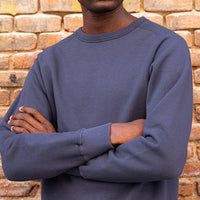


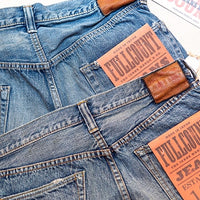

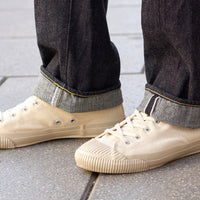
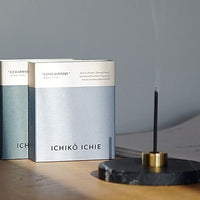
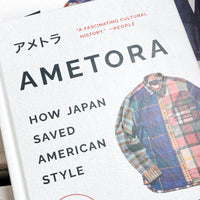
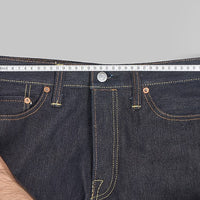
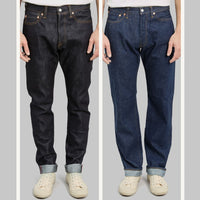




COMMENTS ON THIS POST (2)
Salvo
Intervista molto interessante.
Siete come sempre estremamente professionali.
Complimenti!!!
Gabriel Candil
Hi Isabel – reading this article while travelling in Osaka metro and discovering Japan. Denim are a good example of the mindset of excellence, simplicity, quality that we can find in many things here. Thanks for sharing this interview.
Leave a comment
This site is protected by hCaptcha and the hCaptcha Privacy Policy and Terms of Service apply.